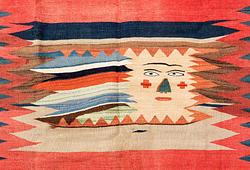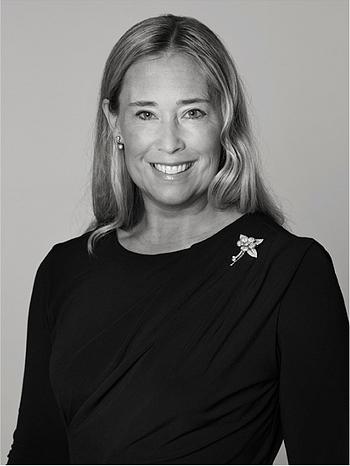A famille verte bowl, Qing dynasty, Kangxi (1662-1722).
Thickly potted and straight-sided deep bowl, painted in the famille verte palette. The exterior decoration is of a collection of scholarly objects and antiquities, positioned either on or close by a table. Whilst the inside and outside rim of the bowl are undecorated, the interior central decoration is of a lozenge shaped panel containing a further group of similar objects. Diameter 21 cm.
Repair to rim.
Provenance
The Avalon Collection.
This collection, which in the main focuses on the Interregnum and Kangxi periods has been both carefully and sensitively formed over the last twenty-five years. The collector, a member of the English Oriental Ceramic Society, has assembled the collection with an eye for provenance whilst purchasing from old European collections, well-established antique dealers and at auction.
Academically, the pieces have been well researched both in terms of their symbolism and narrative themes. In many instances the imagery on the pieces has been referenced to episodes in the romantic and historic novels of Chinese mythology, which were used extensively in the decoration of seventeenth century Chinese porcelain.
Literature
Another identical example of this bowl appears in “Catalogue of Fine Chinese Export Porcelain”, Sotheby’s 6 November 1973, Lot 91, where it was sold for £950.
A plate with a similar decoration is illustrated in “The Copeland Collection: Chinese and Japanese Figures” by William R Sargent, Page 16, Figure 2.
More information
Whilst this design - similar to the “Hundred Antiques” - is not in itself unusual on porcelain of the Kangxi period, the inclusion of a porcelain duck and several figures – as here – is rare. The use of porcelain figures on Chinese ceramics is somewhat limited – although other examples are known. Amongst the objects depicted on the table are the figures of a duck and that of a boy – possibly one of the Twins of Harmony. Although the duck maybe enamel or copper, porcelain examples are known –the most recent discovery being on a censer from the Chengua period - with a Xuande mark. Another cursory reference is in the Dao Shou – a description of Chinese pottery and porcelain, “…the forms of the pieces are most varied…others again, are moulded in the form of single and double gourds, flowers, fruit and animal forms”.




















































